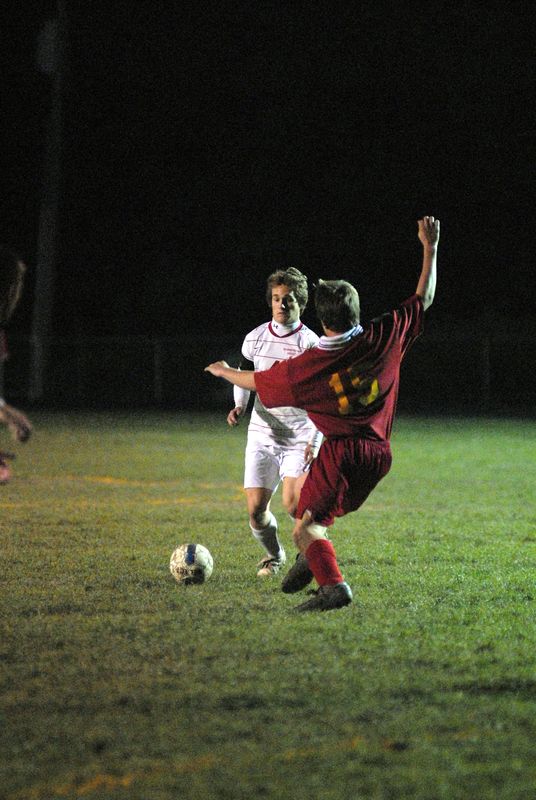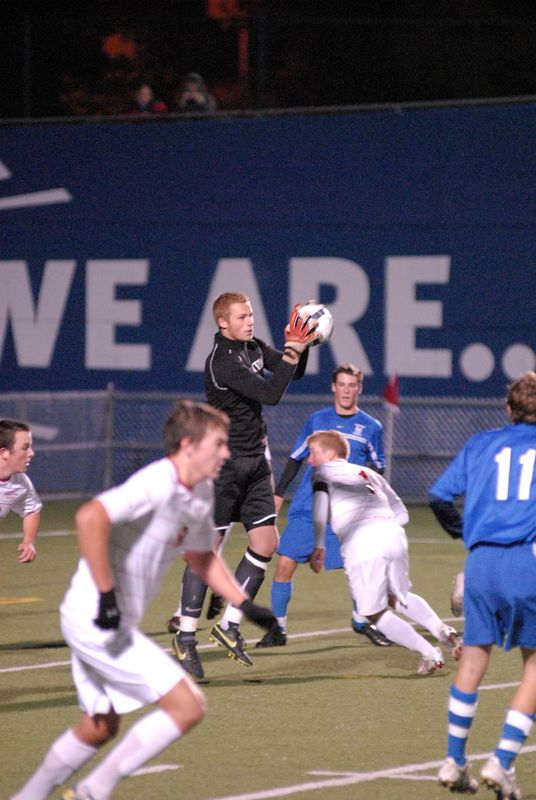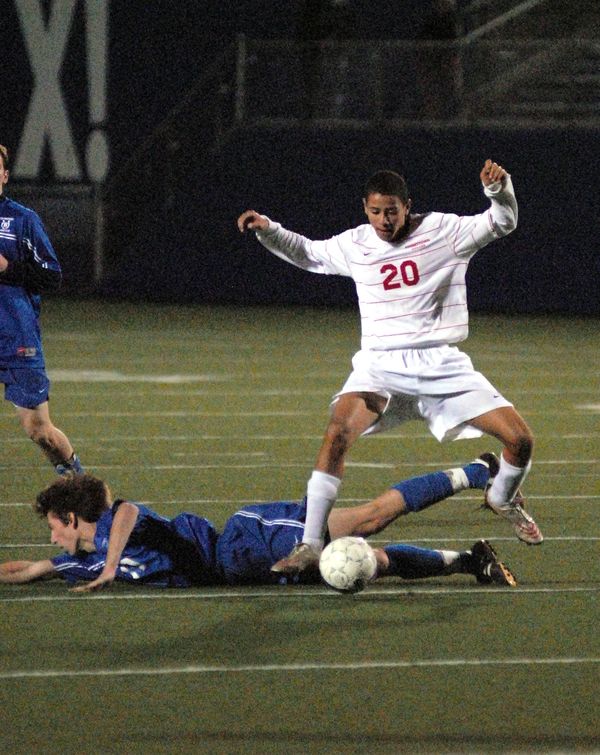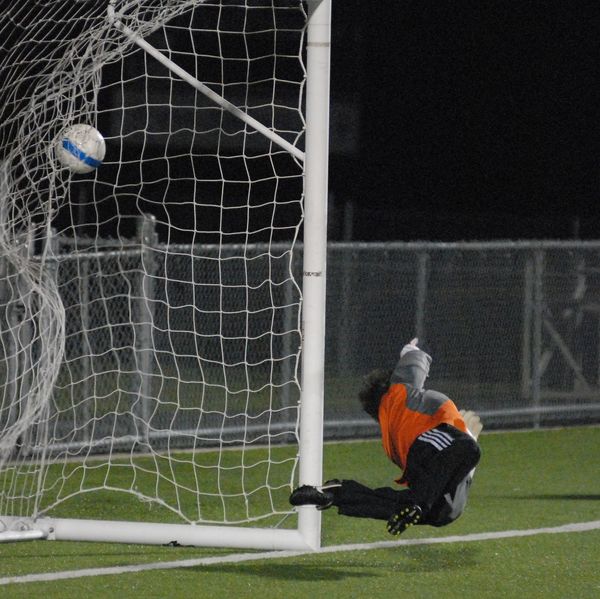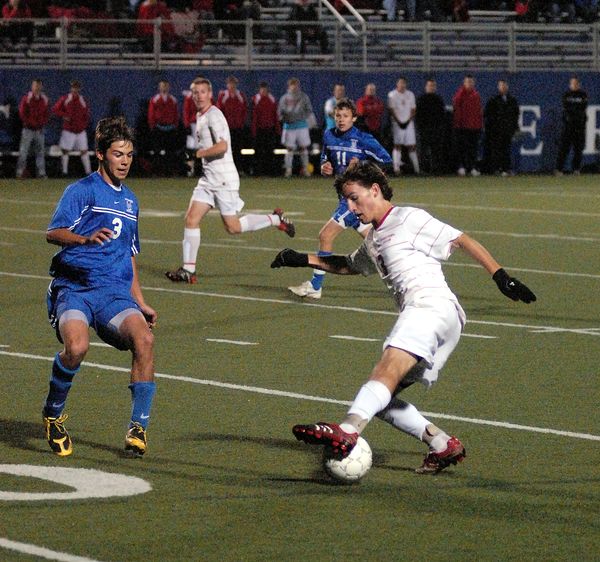Posts for: Shutterbug57
Dec 23, 2017 07:49:36 #
Retina wrote:
Mama, don’t take my SD cards away.
Better watch out - she already got your Kodachrome...
And your CF cards...
Dec 23, 2017 06:29:15 #
I think both digital and film have their place - they do in my stable. The way you approach each is radically different. FWIW, my film bodies are a Nikon N90s & a Mamiya M645 (first gen.) and my main digital bodies are a Nikon D-500 & Nikon D-200 (backup/second camera).
When shooting film, you start making artistic decisions when you buy your film. You need to know the characteristics of the films available and how they support or detract from the shot you are going to make. Color saturation and grain structure are important considerations as are the dynamic range and how far you can push or pull a film and what that does to the resulting shot. When you buy your film, especially B&W, you are also thinking what developer will give me the desired result. If you are going to print, you may well also be thinking about the paper you will use. Then you buy the film.
In the digital world, your body is your film. Megapixles, ISO range & dynamic range are primarily considerations, but so are FX or DX and frames per second, etc. Our film has become conjoined with our hardware. Camera bodies have also sucked in part of the traditional lens function - look at all the gelded lenses that have no way to independently control the aperture.
With digital, your considerations at the time of purchase are less about how any final image will look and more about the hardware. Most of the “film related” artistic decisions are made in post. Want Tri-X grain, click here. Don’t like it, click undo and try another preset. Want old Velvia 50 color saturation, slide this and that, then save a preset. The list goes on and on.
I am not saying one is better than the other, but each have their place. I use digital for the majority of my shooting, but when I want a particular artistic image, film is where I turn. When my kids were at home and playing lots of sports. I shot their games as a journalist and published shots of the games on a team website. Sure I shot my kids, but I shot everybody else’s as well. For this, digital was by far the best way to go. I could shoot a game and have everything published within a few hours. My main concerns were about capturing publishable images - focus, exposure & compensation. The look of the “film” was not important and, for outside night games or dimly lit gyms, noise was just a part of the process (D-200), but noise and grain are completely different. Don’t believe that? Try picking the noise pattern you want in your image.
Now that the kids are adults, I have more time to shoot more artistic images. While digital is still a big part of that world, for many shots I find myself grabbing a film camera. While I enjoy the ease and cost of shooting digital, I find that the images are antiseptic. Shoot at ISO 100 and get no noise - great, but there is no grain or character either. Sure you can add “film grain” in post with an effect, but that is not film grain any more than adding a watercolor effect makes the image a watercolor painting.
Maybe it’s part of being an old fart, but I grew up making the “film decisions” and I can see the difference in the final images between film and digital. If I want the grain of Tri-X pushed 2 stops and processed in D-76, then I will shoot Tri-X and develop it that way. I still have a couple bricks of Old Velvia 50 in the freezer, but I am not going to use it for a portrait shoot when I can get Portra 160.
For me, there are things film does best and things digital does best. The trick is in knowing which tool to use for any given job.
When shooting film, you start making artistic decisions when you buy your film. You need to know the characteristics of the films available and how they support or detract from the shot you are going to make. Color saturation and grain structure are important considerations as are the dynamic range and how far you can push or pull a film and what that does to the resulting shot. When you buy your film, especially B&W, you are also thinking what developer will give me the desired result. If you are going to print, you may well also be thinking about the paper you will use. Then you buy the film.
In the digital world, your body is your film. Megapixles, ISO range & dynamic range are primarily considerations, but so are FX or DX and frames per second, etc. Our film has become conjoined with our hardware. Camera bodies have also sucked in part of the traditional lens function - look at all the gelded lenses that have no way to independently control the aperture.
With digital, your considerations at the time of purchase are less about how any final image will look and more about the hardware. Most of the “film related” artistic decisions are made in post. Want Tri-X grain, click here. Don’t like it, click undo and try another preset. Want old Velvia 50 color saturation, slide this and that, then save a preset. The list goes on and on.
I am not saying one is better than the other, but each have their place. I use digital for the majority of my shooting, but when I want a particular artistic image, film is where I turn. When my kids were at home and playing lots of sports. I shot their games as a journalist and published shots of the games on a team website. Sure I shot my kids, but I shot everybody else’s as well. For this, digital was by far the best way to go. I could shoot a game and have everything published within a few hours. My main concerns were about capturing publishable images - focus, exposure & compensation. The look of the “film” was not important and, for outside night games or dimly lit gyms, noise was just a part of the process (D-200), but noise and grain are completely different. Don’t believe that? Try picking the noise pattern you want in your image.
Now that the kids are adults, I have more time to shoot more artistic images. While digital is still a big part of that world, for many shots I find myself grabbing a film camera. While I enjoy the ease and cost of shooting digital, I find that the images are antiseptic. Shoot at ISO 100 and get no noise - great, but there is no grain or character either. Sure you can add “film grain” in post with an effect, but that is not film grain any more than adding a watercolor effect makes the image a watercolor painting.
Maybe it’s part of being an old fart, but I grew up making the “film decisions” and I can see the difference in the final images between film and digital. If I want the grain of Tri-X pushed 2 stops and processed in D-76, then I will shoot Tri-X and develop it that way. I still have a couple bricks of Old Velvia 50 in the freezer, but I am not going to use it for a portrait shoot when I can get Portra 160.
For me, there are things film does best and things digital does best. The trick is in knowing which tool to use for any given job.
Dec 23, 2017 05:05:57 #
I have a project that I have taken on mostly for fun, but it has a possibility to be published. One of the shots is a Civil War cannon. I want to create a cloud of “smoke” that looks as if the cannon had just been shot. The project is documenting the art and architecture of one of the most ornate cemeteries in the country, so, while we can roam and shoot pretty much at will, the “smoke” needs to be generally non-intrusive.
This is, obviously, outside and in a generally calm wind location. I don’t think bringing in a smoke machine would be appreciated by the management of the cemetery, so I was thinking some sort of canned smoke would be best. I appreciate the input from the group.
This is, obviously, outside and in a generally calm wind location. I don’t think bringing in a smoke machine would be appreciated by the management of the cemetery, so I was thinking some sort of canned smoke would be best. I appreciate the input from the group.
Dec 22, 2017 17:23:04 #
Kiron Kid wrote:
... Vision will always trump technology.
SVP
SVP
In general I agree, but there are exceptions in the digital world. There were some low light gyms that my D-200 could only shoot with a 1.4 lens wide open to stop action & the DOF was unusable. My D-500 is a different story.
Dec 22, 2017 13:24:47 #
sirlensalot wrote:
Besides, as soon as you buy it - it's old! Good words by OP. Thanks.
Ain’t that the truth - especially in the digital age.
Dec 22, 2017 09:02:18 #
Well, I just shot a roll of ektachrome yesterday on a Kodak Vigilant Junior. I also still have, and use, a Mamiya 645 (first gen), a Nikon N90s, a D-70s & D-200. So, I am not throwing stones.
Dec 22, 2017 05:58:05 #
OP - Here is a shot, from our home stadium, which is a pretty normal HS stadium as far as lighting is concerned. Notice the pooling of the light. This is all stadium lighting (no flash). notice how much brighter the grass is behind and to the camera right of the player in white than it is in either the foreground or background. This is why I shoot in aperture priority mode and jack the ISO up so that the shutter is at an acceptable speed in the darkest parts of the field.
This shot was at ISO 3200, f/2.8 (effectively 4.0), 1/1000 shutter & lens at 200mm (280mm)
ETA: OP, I am not sure I understand your exposure data. Your stadium looks similar to our home stadium as far as lighting goes. In this shot I am 2 stops faster on ISO, but lose 1 stop to you because of my TC, so net I am 1 stop faster so far, BUT in the shutter speed I am 5 stops slower (less light). Stated differently, if I had moved to ISO 800 and removed the TC to get an effective f/2.8, I would have had a shutter speed of 1/500. Is it possible you had a ND filter on your lens? With a naked lens, at ISO 800 & f/2.8, a 1/20 shutter should have blown out the image. Alternatively, are you sure you were at ISO 800 - there is not much noise in your images.
This shot was at ISO 3200, f/2.8 (effectively 4.0), 1/1000 shutter & lens at 200mm (280mm)
ETA: OP, I am not sure I understand your exposure data. Your stadium looks similar to our home stadium as far as lighting goes. In this shot I am 2 stops faster on ISO, but lose 1 stop to you because of my TC, so net I am 1 stop faster so far, BUT in the shutter speed I am 5 stops slower (less light). Stated differently, if I had moved to ISO 800 and removed the TC to get an effective f/2.8, I would have had a shutter speed of 1/500. Is it possible you had a ND filter on your lens? With a naked lens, at ISO 800 & f/2.8, a 1/20 shutter should have blown out the image. Alternatively, are you sure you were at ISO 800 - there is not much noise in your images.
Dec 22, 2017 05:46:59 #
OP - Your shutter speeds and ISO are way too low. The following were shot at a well-lit HS stadium with a Nikon D-200 and a Nikkor 80-200/f2.8 on a 1.4 TC, so a maximum effective aperture of 4.0 (you lose a stop for the TC).
All shots were shot at ISO 1600 & f/2.8 (effectively 4.0)
- The goalkeeper - 1/500 shutter. Lens @ 200mm (280 mm effective)
- #20 - 1/2000 shutter. Lens @ 200mm (280 mm effective)
- GOAL!!!! - 1/750 shutter. Lens @ 200mm (280 mm effective)
- 13 on 3 - 1/1250 shutter. Lens @ 100mm(140 mm effective)
These were all shot on a pretty well lit HS field. I locked in the ISO and used aperture priority mode to keep the aperture wide open. The shutter speed was determined by the camera. Notice that even on a well lit field, there are hot spots and darker spots forcing the shutter to wander from 1/2000 to 1/500 all during the same night game. Had this game been on our home field, I would have been at ISO 3200 and had more noise.
The D-200 is now 11 or so years old technology. I was shooting at near the top of its ISO capability. To get reasonably clean images with older DSLR bodies at high ISO, you have to nail the exposure. The images I posted (and the rest of the keepers) are as clean as the D-200 can produce at the ISO selected. Trust me, there were more than a few shots that hit the cutting room floor because I did not nail the exposure and the noise was, simply, unpublishable.
Happy hunting for the new (to you) body. Newer higher ISO bodies make shooting these events even better. I just got a D-500 and can't wait to shoot some night games with it.
All shots were shot at ISO 1600 & f/2.8 (effectively 4.0)
- The goalkeeper - 1/500 shutter. Lens @ 200mm (280 mm effective)
- #20 - 1/2000 shutter. Lens @ 200mm (280 mm effective)
- GOAL!!!! - 1/750 shutter. Lens @ 200mm (280 mm effective)
- 13 on 3 - 1/1250 shutter. Lens @ 100mm(140 mm effective)
These were all shot on a pretty well lit HS field. I locked in the ISO and used aperture priority mode to keep the aperture wide open. The shutter speed was determined by the camera. Notice that even on a well lit field, there are hot spots and darker spots forcing the shutter to wander from 1/2000 to 1/500 all during the same night game. Had this game been on our home field, I would have been at ISO 3200 and had more noise.
The D-200 is now 11 or so years old technology. I was shooting at near the top of its ISO capability. To get reasonably clean images with older DSLR bodies at high ISO, you have to nail the exposure. The images I posted (and the rest of the keepers) are as clean as the D-200 can produce at the ISO selected. Trust me, there were more than a few shots that hit the cutting room floor because I did not nail the exposure and the noise was, simply, unpublishable.
Happy hunting for the new (to you) body. Newer higher ISO bodies make shooting these events even better. I just got a D-500 and can't wait to shoot some night games with it.
Dec 22, 2017 04:58:52 #
Using an off camera flash with an umbrella or soft box would add some depth to the picture. The shade lighting used is just flat. If off camera Flash is intimidating, go to the Strobist site and take a look at his lighting 101-103 “courses”. It is all free and self study and chock full of great info to improve your photos.
Dec 20, 2017 22:08:29 #
Nikon N90s - 20+ years old & still my main 35mm film body.
Nikon D70s - 13 years old & relegated to grandkid training duty.
Nikon D200 - 10 years old and still in use for back-up/second camera duty.
Nikon D500 - <1 year old & primary digital body.
Mamiya M645 - ~43 years old, although I purchased it used, still working as my medium format camera.
Nikon D70s - 13 years old & relegated to grandkid training duty.
Nikon D200 - 10 years old and still in use for back-up/second camera duty.
Nikon D500 - <1 year old & primary digital body.
Mamiya M645 - ~43 years old, although I purchased it used, still working as my medium format camera.
Dec 20, 2017 16:27:54 #
In Rocky Mountain National Park. Shot on Velvia 50.
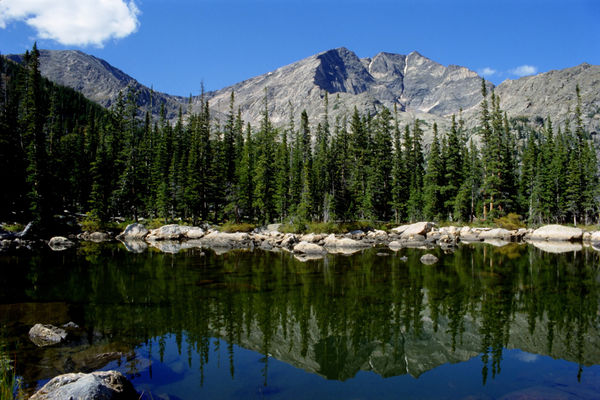
Dec 20, 2017 08:13:01 #
I think the “kit” lens designator may not be the best, because sometimes pro glass is in the kit with a pro body. A better term would be pro glass and consumer glass. The performance and price are generally linked and indicative of which category each falls into. Having pro glass does not make one a pro, but sometimes it will allow one to get a shot not obtainable on consumer glass - need a fast lens in a low light environment - especially in the days where ISO 3200 was not really all that presentable.
Pro level glass tends to be sharper, focus faster and generally outperform consumer glass. THBS, consumer glass, in the right hands can produce some truly stunning images. The trick is in knowing the sweet spot for the lesser quality glass. If you can shoot f/8 or f/11, consumer glass, especially name brand (Nikon/Canon) consumer glass, will frequently perform quite acceptably in the mid aperture range. The limitations tend to be clarity at each end and an inability to open up as much as most pro lenses.
Consumer level glass allows many people to enjoy (D)SLR photography when they would/could not participate if they had to buy a bag full of >$1,000 lenses. Recently Tamron & Sigma have been turning out some really nice pro-level glass at roughly 50% of the Nikon/Canon pricing. The performance of these lenses is virtually equal to the branded glass. This has been a welcome change and will, hopefully, bring the prices on branded glass down.
In the end, we each have to look at what we are trying to accomplish with our photography and decide what level of glass we need (and can afford) to satisfy our vision. For instance, if you are shooting volleyball in dimly lit gyms and want publishable images, a f3/5-f/5.6 consumer zoom may not get it done for you - unless you have a modern ultra-high ISO camera and are willing to live with the noise at those levels. Even then, that glass, wide open, is not likely to be as sharp as a constant f/2.8 lens. If, however, you are shooting snapshots at the beach on sunny days, the consumer lens may be all that you need. It is all about your value equation.
Pro level glass tends to be sharper, focus faster and generally outperform consumer glass. THBS, consumer glass, in the right hands can produce some truly stunning images. The trick is in knowing the sweet spot for the lesser quality glass. If you can shoot f/8 or f/11, consumer glass, especially name brand (Nikon/Canon) consumer glass, will frequently perform quite acceptably in the mid aperture range. The limitations tend to be clarity at each end and an inability to open up as much as most pro lenses.
Consumer level glass allows many people to enjoy (D)SLR photography when they would/could not participate if they had to buy a bag full of >$1,000 lenses. Recently Tamron & Sigma have been turning out some really nice pro-level glass at roughly 50% of the Nikon/Canon pricing. The performance of these lenses is virtually equal to the branded glass. This has been a welcome change and will, hopefully, bring the prices on branded glass down.
In the end, we each have to look at what we are trying to accomplish with our photography and decide what level of glass we need (and can afford) to satisfy our vision. For instance, if you are shooting volleyball in dimly lit gyms and want publishable images, a f3/5-f/5.6 consumer zoom may not get it done for you - unless you have a modern ultra-high ISO camera and are willing to live with the noise at those levels. Even then, that glass, wide open, is not likely to be as sharp as a constant f/2.8 lens. If, however, you are shooting snapshots at the beach on sunny days, the consumer lens may be all that you need. It is all about your value equation.
Dec 20, 2017 07:19:29 #
Hi All:
While I am new to this site, I am not new to photography or forums. I have been shooting SLRs since the early 1970s. My first SLR was a Minolta SRT-201 and I shot with that as my only camera for ~20 years. When I could afford it, I wanted better, faster glass, so I moved to Nikon with the N90s, which I still have and use. When digital became a thing, I was an early adopter and had a few fixed lens cameras.
I went digital SLR with the Nikon D70s (which I use as a trainer for my grandkids) - heck, it has no street value anyway. I then migrated to the Nikon D-200 which was my main body for roughly 10 years. I recently bought the Nikon D-500 as an upgrade from the D-200, which now serves as my back-up body.
For film, in addition to my N90s, I have a Mamiya M645. Before kids, I had a B&W darkroom. I am currently considering getting back into developing my own film, then scanning to digitize the images.
I shoot film for artistic shots and digital for casual & volume shooting. When my kids were growing up, I shot all their sports teams and hosted team web sites to share the pictures with friends and families of the team members.
Historically, my focus has been on sports, wildlife and nature with a little bit of generalist thrown in. My son recent got married and they asked me to shoot the wedding - yikes. I had never shot a wedding or event before and needed to add some kit to do so. I climbed that learning curve and, after buying some light stands and modifiers, I managed to pull it off.
Now that I have a better understanding of flash and off camera flash (and the gear to do it), I am enjoying shooting portraiture, still life and other such shots.
I tend to relate to Joe McNally’s position on being a generalist - although not at his level. I am looking forward to participating in this forum.
While I am new to this site, I am not new to photography or forums. I have been shooting SLRs since the early 1970s. My first SLR was a Minolta SRT-201 and I shot with that as my only camera for ~20 years. When I could afford it, I wanted better, faster glass, so I moved to Nikon with the N90s, which I still have and use. When digital became a thing, I was an early adopter and had a few fixed lens cameras.
I went digital SLR with the Nikon D70s (which I use as a trainer for my grandkids) - heck, it has no street value anyway. I then migrated to the Nikon D-200 which was my main body for roughly 10 years. I recently bought the Nikon D-500 as an upgrade from the D-200, which now serves as my back-up body.
For film, in addition to my N90s, I have a Mamiya M645. Before kids, I had a B&W darkroom. I am currently considering getting back into developing my own film, then scanning to digitize the images.
I shoot film for artistic shots and digital for casual & volume shooting. When my kids were growing up, I shot all their sports teams and hosted team web sites to share the pictures with friends and families of the team members.
Historically, my focus has been on sports, wildlife and nature with a little bit of generalist thrown in. My son recent got married and they asked me to shoot the wedding - yikes. I had never shot a wedding or event before and needed to add some kit to do so. I climbed that learning curve and, after buying some light stands and modifiers, I managed to pull it off.
Now that I have a better understanding of flash and off camera flash (and the gear to do it), I am enjoying shooting portraiture, still life and other such shots.
I tend to relate to Joe McNally’s position on being a generalist - although not at his level. I am looking forward to participating in this forum.
